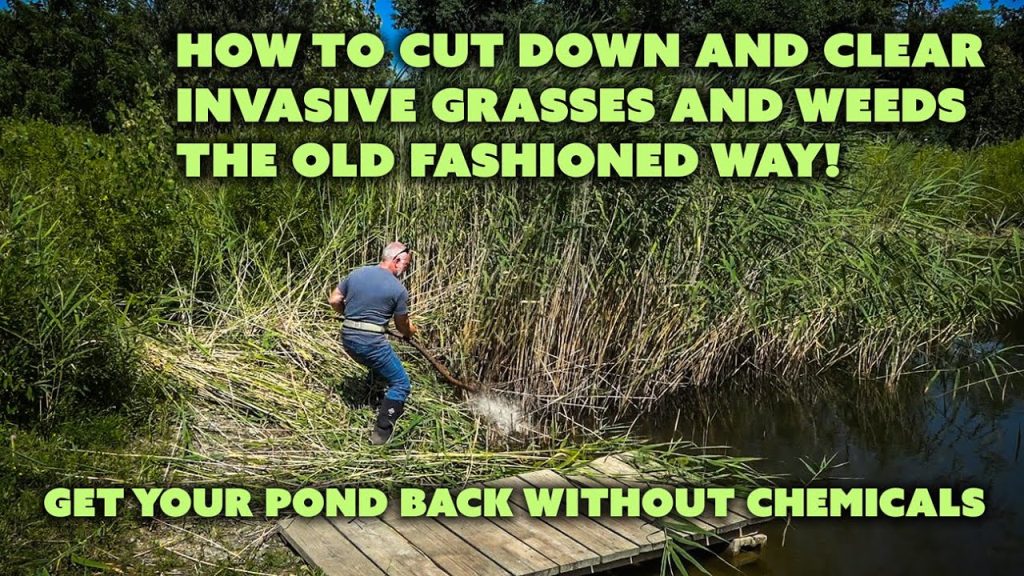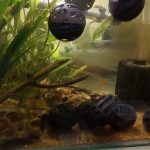Phragmites, also known as common reed, are tall perennial grasses that can quickly take over a pond, crowding out native plant species and disrupting the ecosystem. If you’re dealing with a phragmites infestation in your pond, it’s important to take action to control and eliminate this invasive plant. In this article, we’ll explore some effective methods to get rid of phragmites in a pond.

Credit: www.lakerestoration.com
1. Manual Removal
One of the most labor-intensive but effective ways to control phragmites is through manual removal. This involves physically cutting or pulling out the plants from the pond. Make sure to wear protective gear such as gloves and long sleeves to avoid skin irritation.
Use a sharp tool like a machete or a weed cutter to cut the phragmites at the base, ensuring that you remove as much of the plant as possible. Pull out the cut plants from the water and dispose of them properly to prevent re-infestation.
2. Herbicide Treatment
Herbicides can be an effective way to control phragmites in a pond, but it’s important to use them carefully to minimize harm to other aquatic life. Select an herbicide specifically designed to target phragmites and follow the manufacturer’s instructions for application.
Herbicides can be applied directly to the foliage of the phragmites or to the water where the plants are growing. Make sure to apply the herbicide on a calm day to prevent drift and avoid contact with non-target plants or animals.
3. Cutting and Burning
Cutting and burning the phragmites can be an effective way to control their growth and prevent re-sprouting. Cut the plants close to the ground and gather them in a pile. Make sure to check local regulations before burning the plant material.
Burning the phragmites can help to kill the seeds and prevent them from germinating, reducing the likelihood of re-infestation. This method may require multiple treatments to completely eradicate the plants from the pond.
4. Biological Control
Introducing natural predators or competitors of phragmites can be a sustainable way to control their growth in a pond. For example, certain insects or grazing animals may feed on phragmites, helping to reduce their population naturally.
Before introducing any biological control agents, it’s important to consult with a local environmental expert to ensure that the chosen method is safe and effective for your pond ecosystem.

Credit: weedersdigest.com
5. Wetland Restoration
Restoring the wetland habitat in and around the pond can help to naturally suppress the growth of phragmites. By creating conditions that are favorable to native plant species, you can outcompete the invasive phragmites and restore balance to the ecosystem.
Consider planting native aquatic plants and grasses around the pond to provide habitat for beneficial wildlife and discourage the growth of phragmites. Wetland restoration projects may take time to show results but can be a long-term solution to phragmites infestations.
6. Regular Monitoring
Once you’ve implemented control measures to get rid of phragmites in your pond, it’s important to monitor the area regularly to check for re-growth or new infestations. Early detection is key to preventing phragmites from establishing a stronghold in the pond.
Keep an eye out for any signs of phragmites regrowth, such as new shoots or seed heads. If you notice any new plants, take immediate action to remove them before they have a chance to spread and take over the pond once again.
Conclusion
Phragmites can be a persistent and challenging invasive plant to control in a pond, but with the right methods and consistent effort, you can effectively manage and eliminate this species. Whether you opt for manual removal, herbicide treatment, cutting and burning, biological control, wetland restoration, or a combination of methods, it’s important to tailor your approach to the specific conditions of your pond.
By taking proactive steps to get rid of phragmites and restore balance to your pond ecosystem, you can create a healthy and thriving habitat for native plants and wildlife. Remember to always follow best practices for environmental stewardship and consult with experts if needed to ensure the long-term success of your phragmites control efforts.




